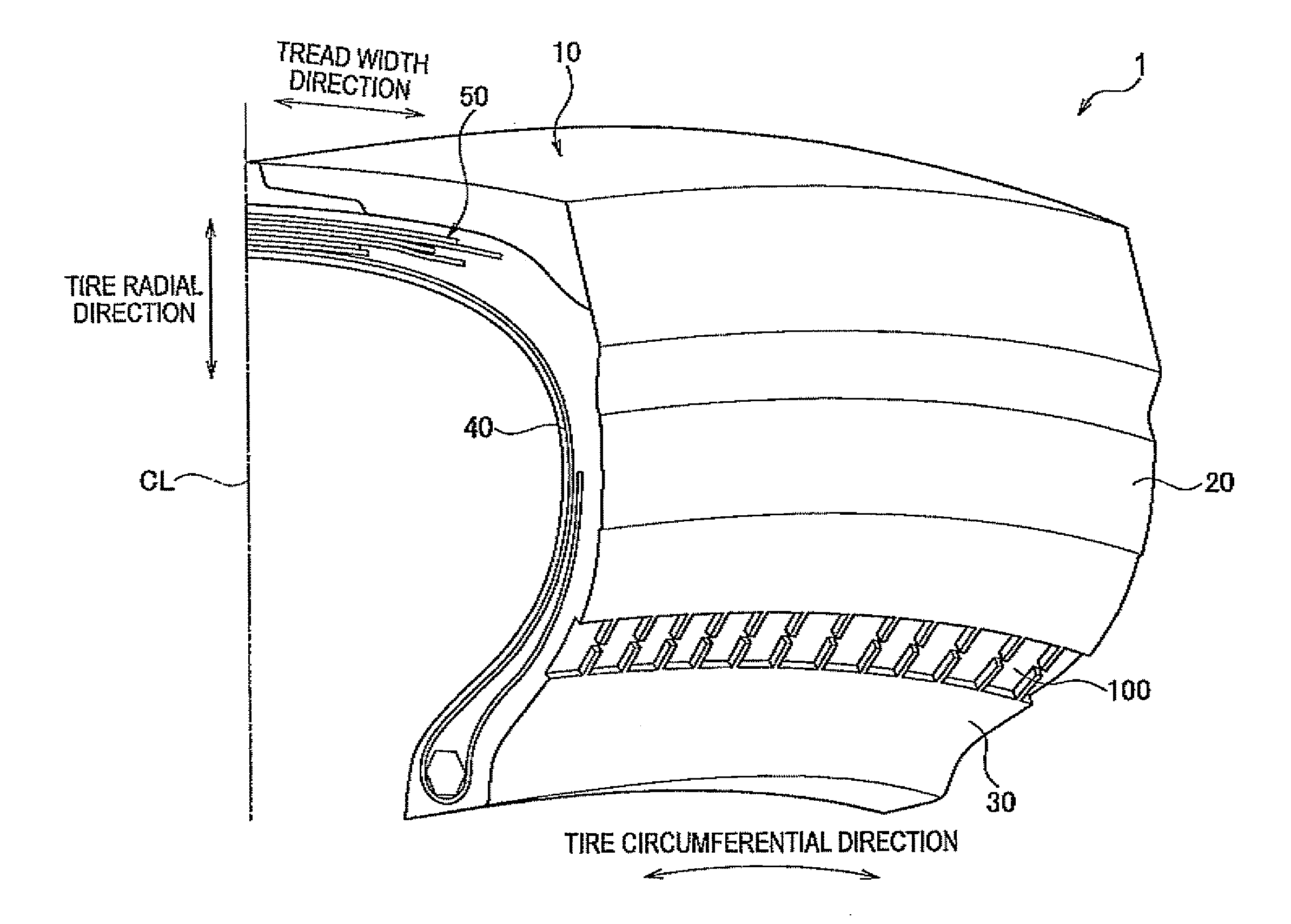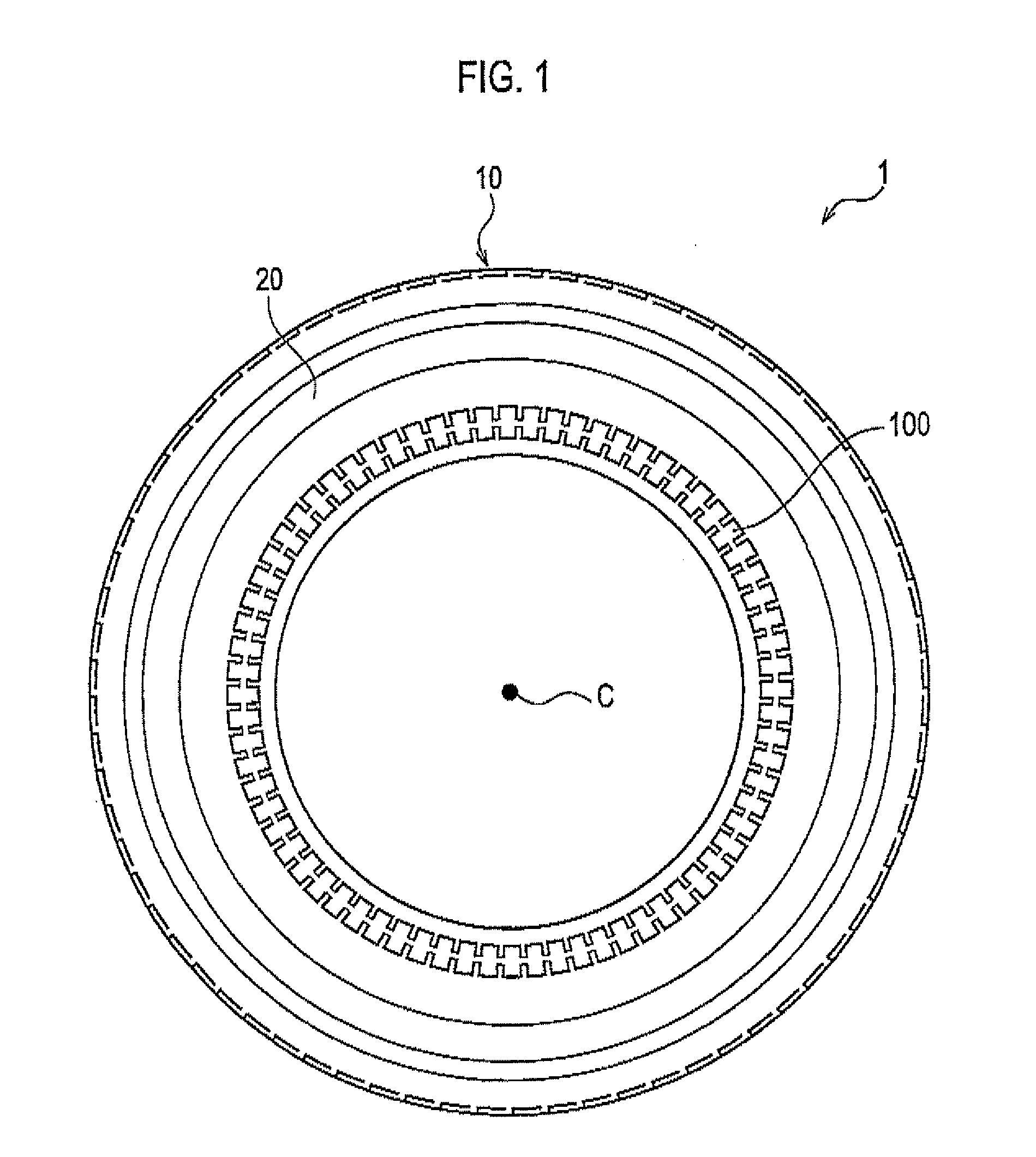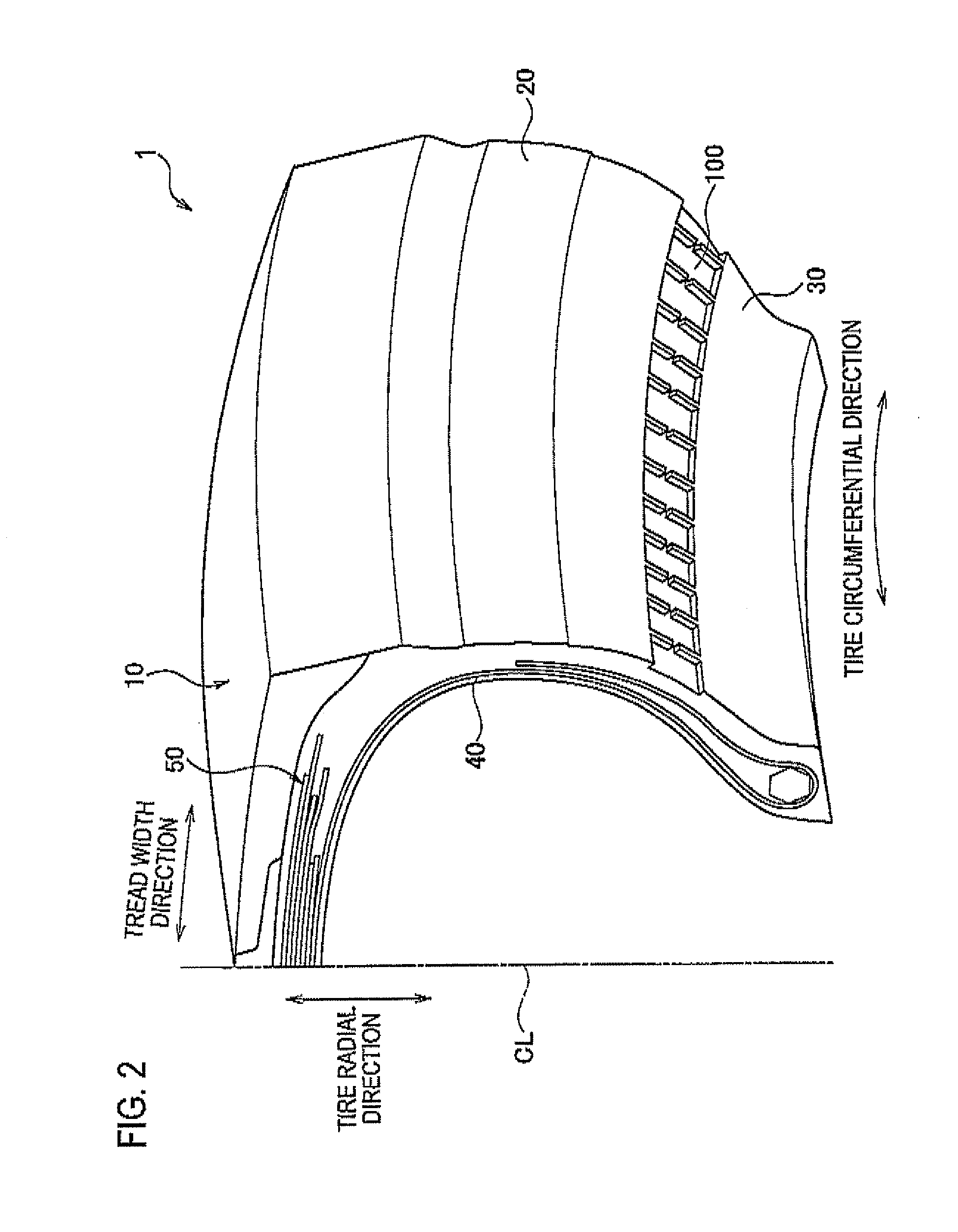tire
a technology of tires and bead units, applied in the field of tires, can solve the problems of increasing the deformation amount of rubber, increasing manufacturing costs, and easy generation of heat, and achieve the effects of suppressing the deterioration of tires, suppressing the increase of the temperature of the bead unit 30, and reducing the production cos
- Summary
- Abstract
- Description
- Claims
- Application Information
AI Technical Summary
Benefits of technology
Problems solved by technology
Method used
Image
Examples
first embodiment
(1) First Embodiment
[0044]In the first embodiment, (1.1) Configuration of pneumatic tire 1, (1.2) Configuration of circumferential recessed portion 100, (1.3) State of turbulence generation, and (1.4) Operation and effect will be described.
(1.1) Configuration of Pneumatic Tire 1
[0045]A pneumatic tire 1 according to the present embodiment is a pneumatic tire for a heavy load, which is mounted in a construction vehicle such as a dump truck. The configuration of the pneumatic tire 1 will be described with reference to the drawings. FIG. 1 is a diagram seen from a side wall surface at a tire side portion 20 side in the pneumatic tire 1 according to the first embodiment of the present invention. FIG. 2 is a partially exploded perspective view illustrating the pneumatic tire 1 according to the first embodiment of the present invention. FIG. 3 is a sectional view illustrating the pneumatic tire 1 according to the first embodiment of the present invention.
[0046]As illustrated in FIG. 1, the...
second embodiment
(2) Second Embodiment
[0076]Next, with reference to FIG. 6, a pneumatic tire 2 according to a second embodiment of the present invention will be described. In addition, a detailed description for the same configuration as that of the first embodiment will be appropriately omitted. FIG. 6(a) is a partially enlarged perspective view of a circumferential recessed portion 200 according to the second embodiment. FIG. 6(b) is a partially enlarged plan view of the circumferential recessed portion 200 according to the second embodiment.
[0077]The pneumatic tire 2 according to the second embodiment is formed at the tire side portion 20 thereof with the circumferential recessed portion 200. The circumferential recessed portion 200 is provided with a plurality of first blocks 210 that extend to protrude from a first wall surface 201 positioned at an outer side in the tire radial direction to an inner side in the tire radial direction. Furthermore, the circumferential recessed portion 200 is prov...
third embodiment
(3) Third Embodiment
[0084]Next, with reference to FIGS. 8(a) and (b), a pneumatic tire 3 according to a third embodiment will be described. In addition, a detailed description for the same configuration as that of the first embodiment will be appropriately omitted. FIG. 8(a) is a partially enlarged perspective view of a circumferential recessed portion 300 according to the third embodiment. FIG. 8(b) is a partially enlarged plan view of the circumferential recessed portion 300 according to the third embodiment.
[0085]The pneumatic tire 3 according to the third embodiment is formed at the tire side portion 20 thereof with the circumferential recessed portion 300. The pneumatic tire 3 is provided with a plurality of first blocks 310 that extend to protrude from a first wall surface 301 positioned at an outer side in the tire radial direction to an inner side in the tire radial direction and a plurality of second blocks 320 that extend to protrude from a second wall surface 302 position...
PUM
 Login to View More
Login to View More Abstract
Description
Claims
Application Information
 Login to View More
Login to View More - R&D
- Intellectual Property
- Life Sciences
- Materials
- Tech Scout
- Unparalleled Data Quality
- Higher Quality Content
- 60% Fewer Hallucinations
Browse by: Latest US Patents, China's latest patents, Technical Efficacy Thesaurus, Application Domain, Technology Topic, Popular Technical Reports.
© 2025 PatSnap. All rights reserved.Legal|Privacy policy|Modern Slavery Act Transparency Statement|Sitemap|About US| Contact US: help@patsnap.com



